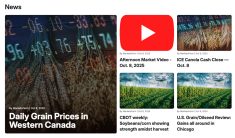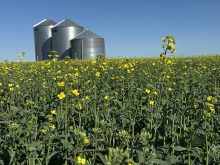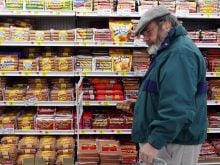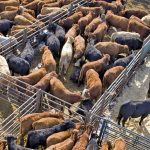Slaughter cattle rise
Fed cattle weekly average prices were $2.50-$3 per hundredweight higher than the previous week’s average, said Canfax.
With prices more than $80 per cwt. feedlots were willing sellers and eight percent more cattle traded with the total nearing 26,000 head through Canfax members.
Carcass weights are declining, indicating that feedlots are extremely current. Steer carcasses were down 36 lb. in the past four weeks.
Alberta prices April 28 were steers $80.50-$81.75, flat rail $134.55-$134.85 and heifers $136 dressed.
With peak barbecue season approaching, demand should improve, pushing cut-out prices higher, said Canfax.
Read Also
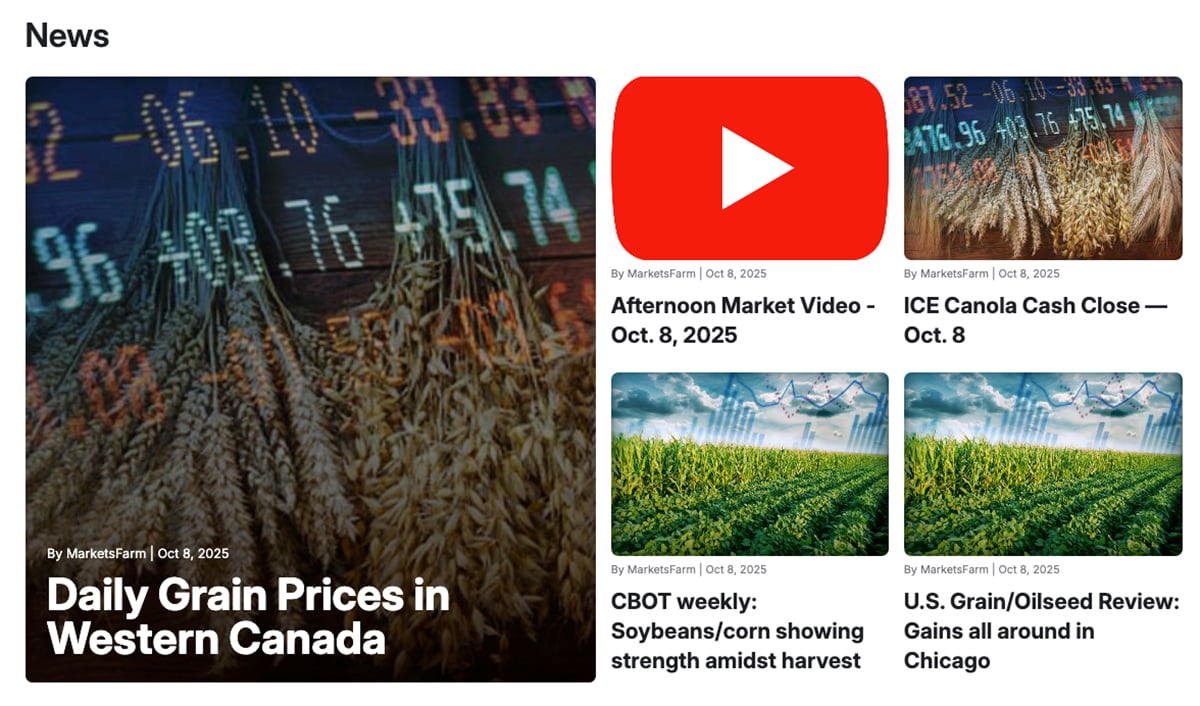
VIDEO: Catch up with the Western Producer Markets Desk
The Western Producer Markets Desk provides daily updates on agricultural markets, with recent video commentary including looks into canola, wheat, cattle and feed grains.
Federal and provincial inspected kill is expected to continue to run near 85,000 head, keeping packers in the market for cattle.
Feedlots appear to have drawn down their May fed cattle supply by putting cattle into the set-aside program in March and April. This will give feedlots bargaining power for the next few weeks.
Beef price up
Two weeks ago, Canadian cut-out values gained about $3 per cwt. on AAA and $1 on AA. Seasonally, cut-out prices rise into May, Canfax said. Current pricing is slightly less than last year’s prices at this time.
Packers report good retail beef movement in preparation for the May long weekend. Movement into Mexico is smaller due to some plant delisting, but a strong U.S. market is helping to make up the difference.
U.S. cutouts last week were $4.50-$5 US per cwt. higher and $5-$10 per cwt. higher this time last year.
The Calgary carcass market for this week is $1-$3 Cdn higher with handyweight steers at $138-$140 per cwt.
Feeders rally
Alberta feeder markets saw 32,000 head trade, down 10 percent from the week before and 49 percent down from a year ago.
Prices improved, supported by a stronger fed market and lots of demand for grass cattle.
Steers 500-700 lb. were steady to $1 per cwt. higher than the week before, while 700-900 lb. traded $2-$2.50 higher. Steers 900 lb. and heavier rose 75 cents.
Heifers 500-700 lb. were $1.75-$2 higher and 700-900 lb. were up $3. Heifers 900 lb. and heavier were steady.
D1, 2 cows stabilized, averaging $23.50 per cwt. Butcher bulls fell $1.25.
The strong fed market will encourage investment in feeders, Canfax said. The continued use of the set-aside program and the Alberta basis guarantee will also help stabilize the feeder market. XL Beef has moved mature cull animal slaughter from Moose Jaw to Calgary.
Stock bred cow prices in northern and central Alberta were similar. Medium quality bred cows were $300-$750 and excellent quality were $750-$1,250. Bred heifers in northern Alberta were $300-$940. Cow-calf pairs were mostly $750-$1,250, but some pairs traded as low as $540.
Demand for pork
Cash hog and pork prices moved higher as the retail market showed good pork demand.
The average Iowa-Minnesota daily direct hog price (51-52 percent lean carcass converted to live weight) increased from $53.89 US per cwt. on April 25 to $56.85 April 28.
The Chicago Mercantile Exchange hog futures price for the May contract closed at $78.15 a cwt., on April 29.
The wholesale cut out price at the start of the week was $68.27 per cwt. and closed the week at $71.02 on April 29.
Hog prices also rose in Western Canada.
Statistics Canada reported more pigs on Canadian farms compared to last year. The total inventory on April 1 was 14.7 million hogs, up about one percent from last year. Saskatchewan saw the greatest increase at 6.5 percent to 1.358 million. Manitoba’s herd grew by 2.5 percent to 2.91 million head. Alberta’s herd slipped 0.2 percent to 2.025 million.
Other livestock
Ontario Stockyards reported 2,857 sheep and lambs and 378 goats traded. Sheep and lambs sold steady to slightly lower. Goats held firm.


